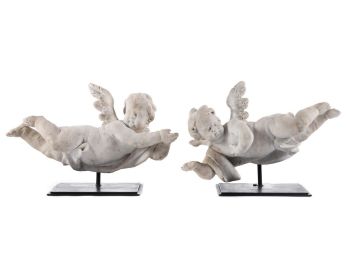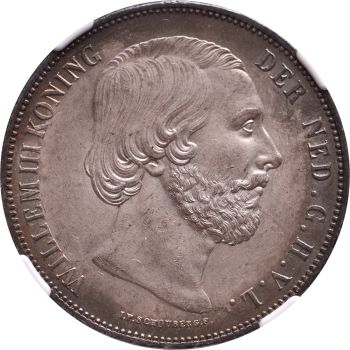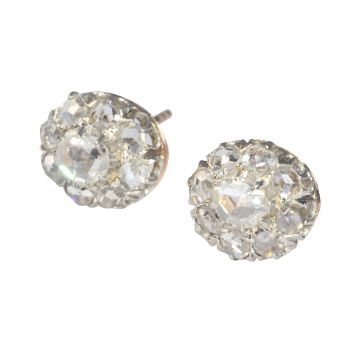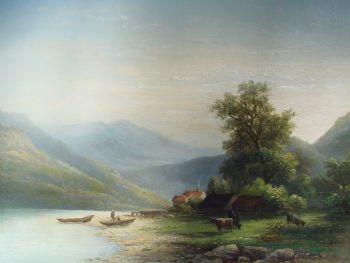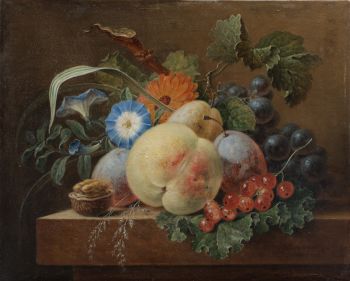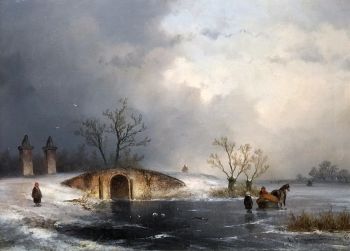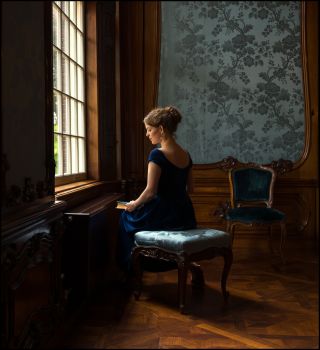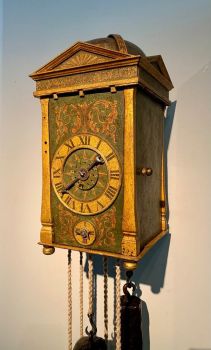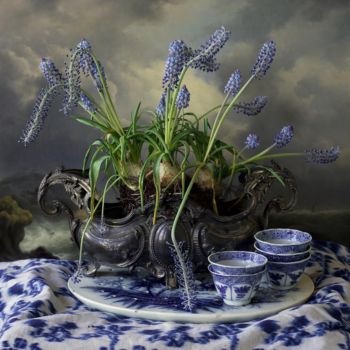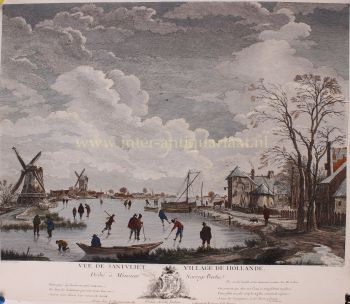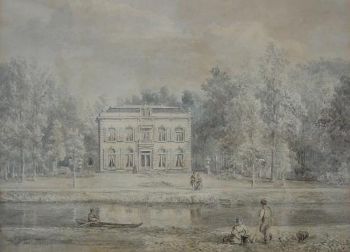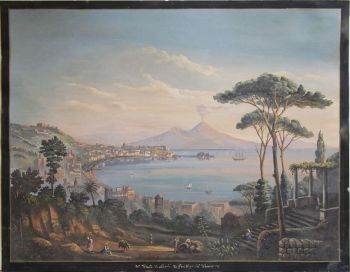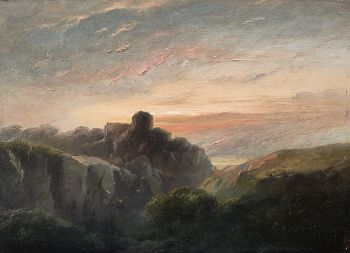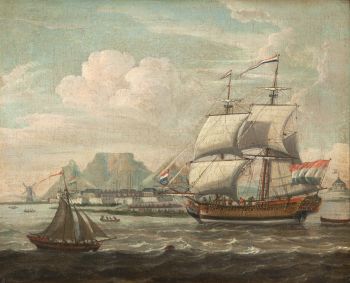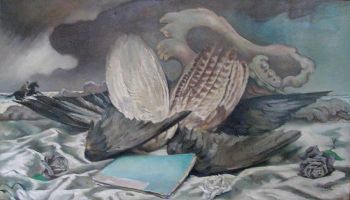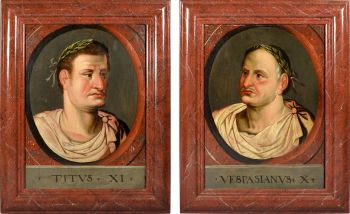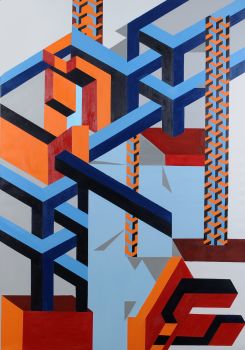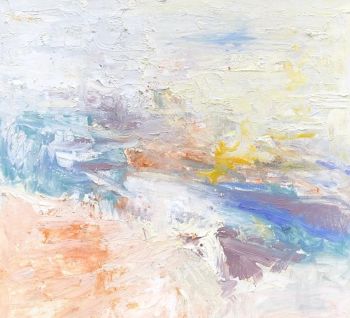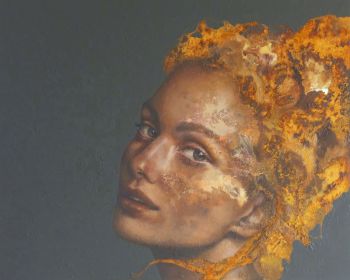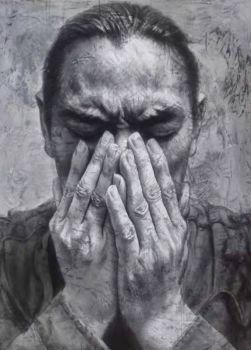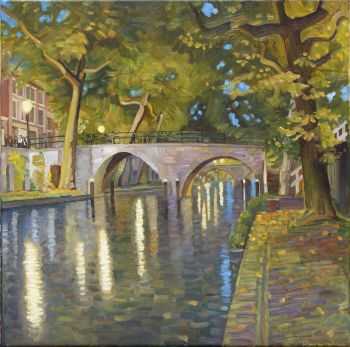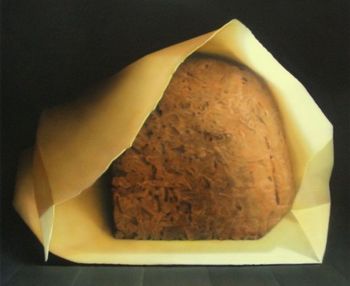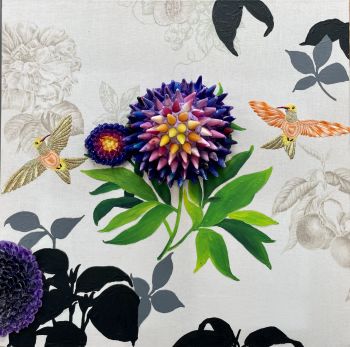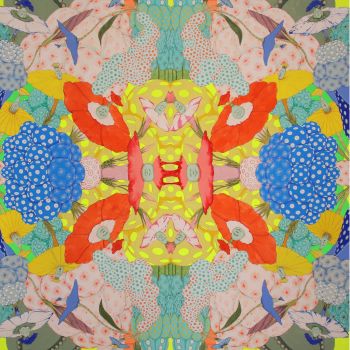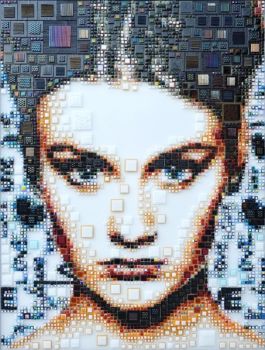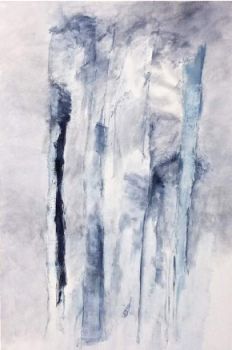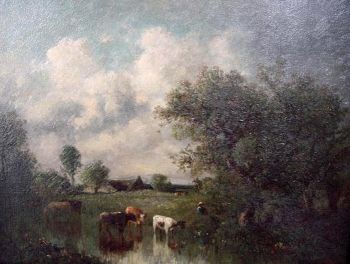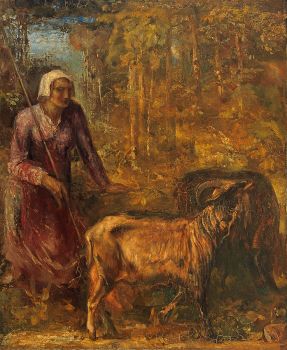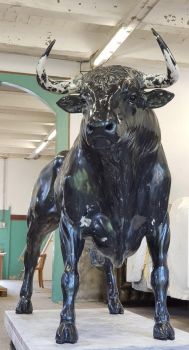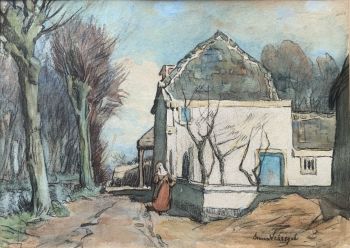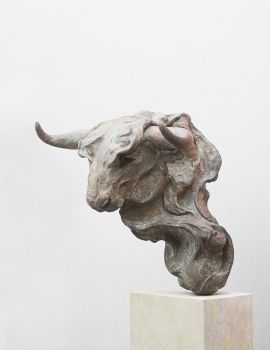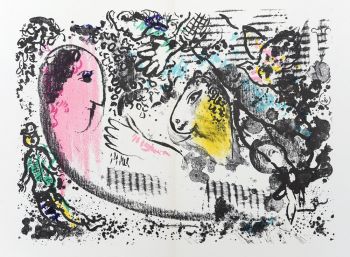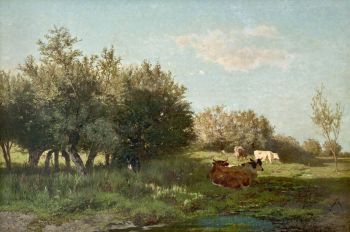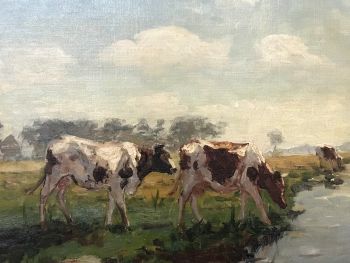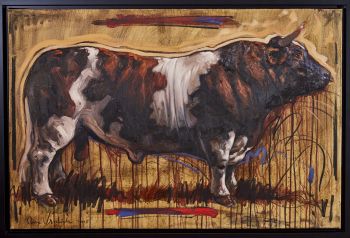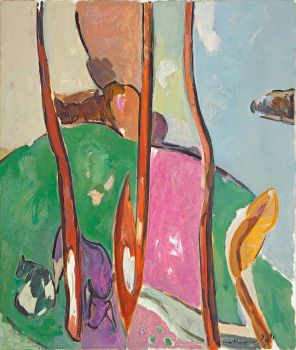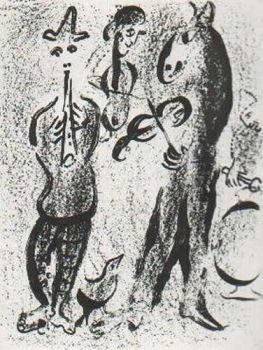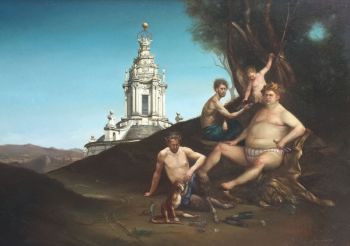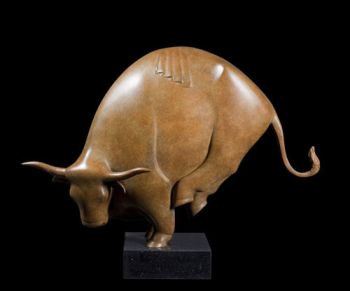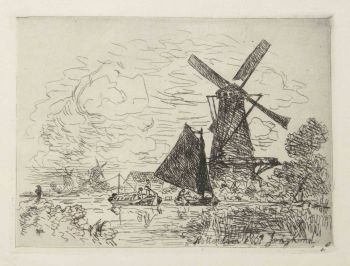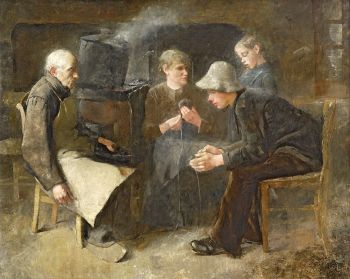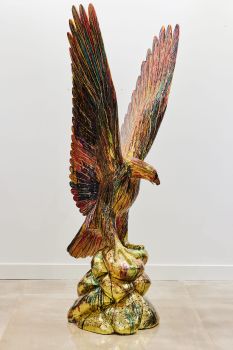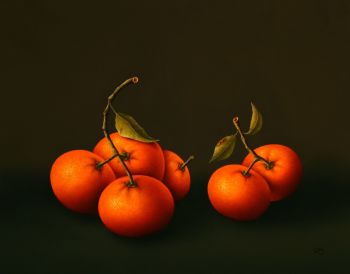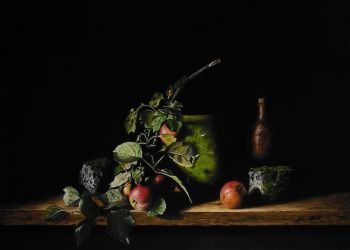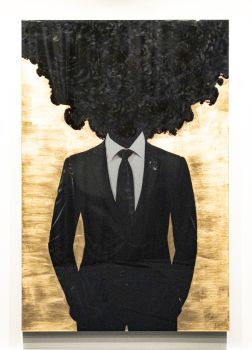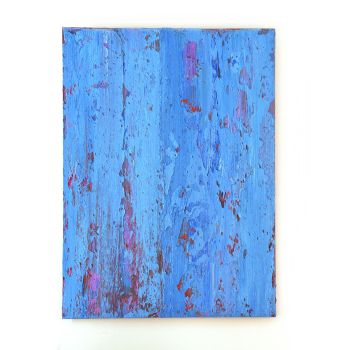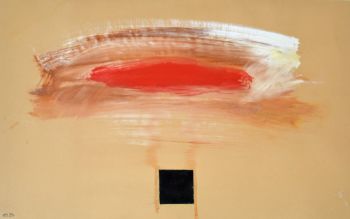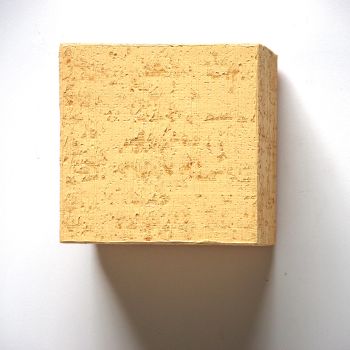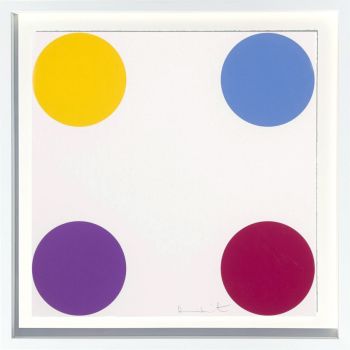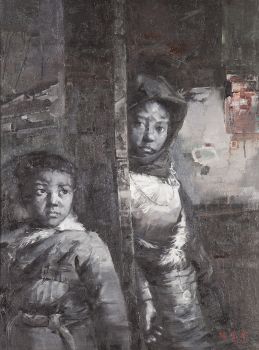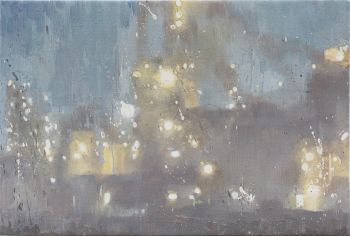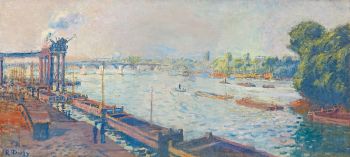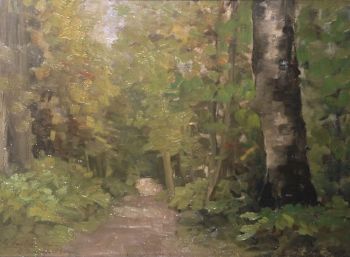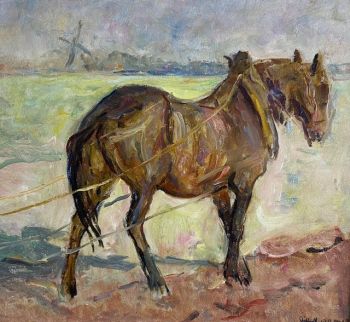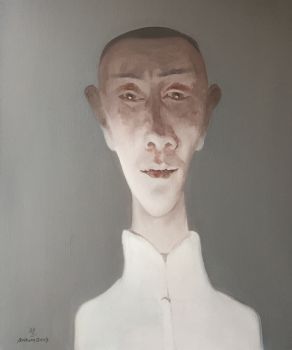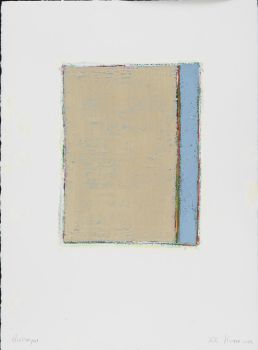Two Chinese Reverse Mirror Paintings, after paintings by François Boucher 1774 - 1776
Artista Sconosciuto
BicchiereSpecchioDipingere
52 ⨯ 41 cm
ConditionExcellent
Attualmente non disponibile tramite Gallerease
- A proposito di opere d'arteReverse mirror paintings are very difficult to manufacture, because the image has to be applied in an unusual order. The details in the foreground are painted first and the background is added as the last step. Many of these reverse mirror paintings were made after illustrations and engravings of Boucher.
L’Agréable Leçon (the entertaining lesson)
In a landscape of trees and a picturesque fountain we see a pair of herds. Snugged up to the boy, the girl plays on his oat. Her favorite sheep is tied to a ribbon that she holds and some more sheep lie at her feet. The scene is completed with a flower basket.
The original is an oval shaped painting of Boucher of 1748 that was presented at the Paris Salon of the same year with exhibit number 19: ‘Un tableau ovale représentant un berger, qui montre à jouer de la flûte a sa bergère’. (an oval scene representing a shepherd who learns his shepherdess to play the flute).
On the Salon of 1750 it was part of item 24: ‘Quatre pastorale de forme ovale […] et la quatrième un berger qui montre à jouer de la flûte à sa bergère sous le même numéro.’
R. Gaillard made a rectangular engraving of the painting, dedicated to the count de Coigny, and gave it the title ‘L’Agréable Leçon’.
In 1752 this pastoral scene was shaped into a sculpture by an anonymous modelmaker from Sèvres under the title ‘le Flûteur’.
Le Mouton Favori
In a landscape with woods and a ruin in the background a pair of shepherds is sitting. The boy has a sheep on his lap and holds a rose over the girl’s head. The girl is ties a ribbon round the neck of a sheep. In the foreground some sheep are lying by the shepherds feet. On the right a basket with flowers and a dog.
The original of this painting has disappeared, but a rectangular engraving by R. Gaillard titled ‘Le Mouton Favori’ remained. - A proposito di opere artista
Può succedere che un artista o un creatore sia sconosciuto.
Alcune opere non sono determinate da chi sono state realizzate o sono state realizzate da (un gruppo di) artigiani. Esempi sono statue dell'antichità, mobili, specchi o firme non chiare o leggibili ma anche alcune opere non sono affatto firmate.
Inoltre puoi trovare la seguente descrizione:
•"Attribuito a …." A loro avviso probabilmente opera dell'artista, almeno in parte
•“Studio di ….” o “Officina di” A loro avviso un'opera eseguita nello studio o nella bottega dell'artista, eventualmente sotto la sua supervisione
•“Cerchio di…” A loro avviso un'opera del periodo dell'artista che mostra la sua influenza, strettamente legata all'artista ma non necessariamente al suo allievo
•"Stile di..." o "Seguace di..." A loro avviso un'opera eseguita nello stile dell'artista ma non necessariamente da un allievo; può essere contemporaneo o quasi contemporaneo
•“Modalità di…” A loro avviso un'opera nello stile dell'artista ma di epoca successiva
•"Dopo …." A loro avviso una copia (di qualsiasi data) di un'opera dell'artista
•“Firmato…”, “Datato…” o “Iscritto” A loro avviso l'opera è stata firmata/datata/inscritta dall'artista. L'aggiunta di un punto interrogativo indica un elemento di dubbio
•"Con firma....", "Con data...", "Con iscrizione..." o “Riporta firma/data/iscrizione” a loro avviso la firma/data/iscrizione è stata aggiunta da qualcuno diverso dall'artista
Artwork details
Related artworks
Artista Sconosciuto
A pair of angels Antwerp, 17th century, Carrara marble17th century
Prezzo su richiestaFrederik Muller
1 - 4 / 12Artista Sconosciuto
A superb Indonesian royal gem-set gold overlaid silver betel box19th century
Prezzo su richiestaZebregs & Röell - Fine Art - Antiques
Corstiaan Hendrikus de Swart
Mountain landscape with Lake1838 - 1900
Prezzo su richiestaKunsthandel Pygmalion
Artista Sconosciuto
Verre bécher «ZWISCHENGOLD» très rare.1730
Prezzo su richiestaPeter Korf de Gidts - Antiquairs
Artista Sconosciuto
Verre à boire Cristallo façon de Venise1600 - 1650
Prezzo su richiestaPeter Korf de Gidts - Antiquairs
Artista Sconosciuto
Een Gotische zuidelijke Nederlanden wandklok1580 - 1590
Prezzo su richiestaNico van den Assem restauratie
1 - 4 / 24Dutch School
Arrivo di un uomo delle Indie orientali olandesi a Table Bay18th century
Prezzo su richiestaZebregs & Röell - Fine Art - Antiques
Roman & Henriëtte Reisinger
Still life with pottery and eggs2013
Prezzo su richiestaAtelier/ Galerie H&R Reisinger
1 - 4 / 24Gerard Bilders
The 'Uiterwaarden' at Oosterbeek (flood plains)1861
Prezzo su richiestaStudio 2000 Art Gallery
1 - 4 / 24René Lalique
Uno dei primi vasi "Bluets" disegnato da Rene Lalique (1860-1945)1910 - 1920
Prezzo su richiestaLennart Booij Fine Art and Rare Items
1 - 4 / 24






